Search
Did you mean: Arjuna?
Search Results

Definition
Venus
In Roman mythology, Venus was the goddess of love, sex, beauty, and fertility. She was the Roman counterpart to the Greek goddess Aphrodite. However, Roman Venus had many abilities beyond the Greek Aphrodite; she was a goddess of victory...
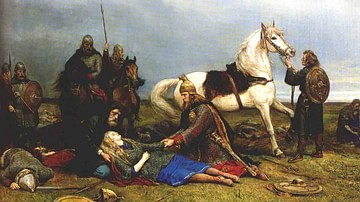
Article
Ten Legendary Female Viking Warriors
In 2017 CE, Uppsala University archaeologist Charlotte Hedenstierna-Jonson published her study of a Viking grave discovered in Birka, Sweden in the 1800's CE which she and her team had revisited. She claimed that what was formerly understood...

Article
Capitals of the Roman Empire: Constantinople & Rome
Constantinople at first had much in common with the temporary capitals of the 2nd and 3rd century CE and the tetrarchic capitals. It was an existing city of medium size, well located on the road network, and unlike most of them, it was also...

Article
The Year of the Four Emperors & the Demise of Four Roman Legions
During the Year of the Four Emperors (69 CE), the fight between Vitellius and Vespasian would ultimately bring about the demise of four legions, the XV Primigenia, I Germanica, IIII Macedonica, and XVI Gallia. All four of these legions had...
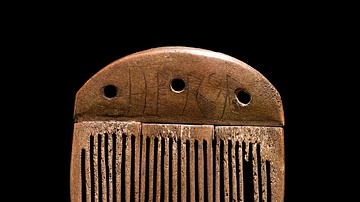
Image
Vimose Comb
This comb, known as the Vimose Comb, found in Denmark, represents the earliest inscription that is without a doubt runic. It reads "harja" (possibly meaning “comb”, or “warrior”) and is dated to c. 160 CE, and it uses runes so confidently...

Image
Collection of Ptolemaic Jewellery
This opulent collection of Ptolemaic jewellery from Egypt probably belonged to a wealthy woman and was made between 225–175 BCE. The various pieces were made out of gold and are inlaid with a variety of precious stones. The collection...
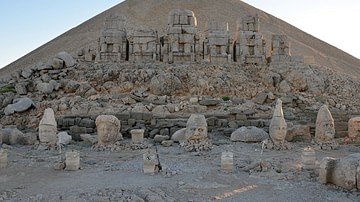
Image
Eastern Terrace of Mount Nemrut
Overview of the thrones and the heads of the gods on the eastern terrace of Mount Nemrut. From left to right: King Antiochus I, Commagene-Fortuna, Zeus-Oromasdes, Apollo-Mithras and Hercules. Mount Nemrut (Turkish: Nemrut Dağı) is one of...

Image
A Street in Pompeii with Stepping Stones & a Public Fountain
A street in Pompeii with stepping stones, wheel-ruts and a public fountain with a relief of Silenus as fountain-god resting on a wineskin. The fountain is located in front of a water tower. Regio VI, corner of Via della Fortuna and Via del...
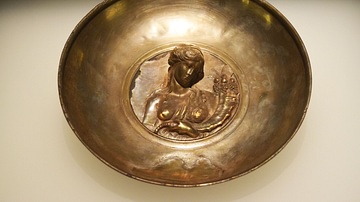
Image
Goddess Phiale from Ancient Georgia
This phiale comes from the Armaziskhevi archaeological site in Georgia and dates from the 2nd century CE. The medallion of the phiale features a goddess — Fortuna or Amalthea — with cornucopia. Separate parts of the relief are gilt. The creator...
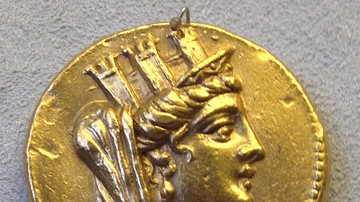
Image
Tyche On a Golden Double Shekel
Golden double shekel from Tyre in today's Southern Lebanon, dated 104/103 BCE, two decades after the Phoenician city regained its independence from the fading Seleucid Empire, depicting the head of deity Tyche (Fortuna), wearing a crown of...